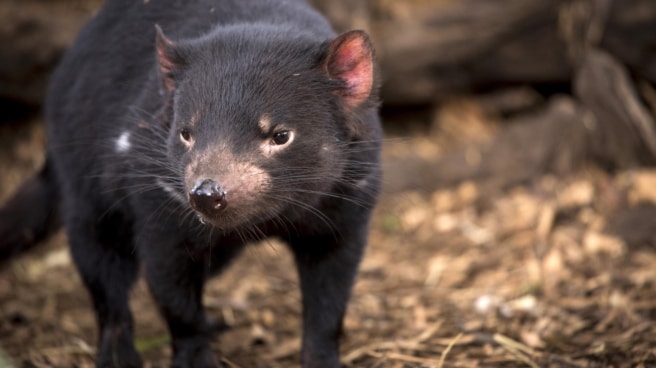

Tasmanian devil specimen.
Known for the island from which it originates in Australia, Tasmanian devil This animal might have been a small dog, but its foul odor and the noise it made when attacked or felt threatened led to it being called a “demon.” A demon who may hold the secret to surviving cancer.
Considered the world’s largest carnivore, the marsupial has been the victim of facial tumors for three decades that have wiped out two-thirds of the Tasmanian devil population, but the animal has developed strategies to combat them. survival which give hints to humanity to learn living with cancer.
Tumors on the face of the Tasmanian devil (Sarcophilus harrisii), one of the few animal species prone to the disease infectious cancerspread through bites during fighting, feeding and mating.
Once infected, the tumor expands, thereby creating the risk of metastasis, necrosis or secondary infections, as well as destruction of the bones or powerful jaws of this elusive nocturnal marsupial, as explained by foreign media, including EFEElisa Ringwaldt is a researcher at the University of Tasmania in the remote Surrey Hills town.
Environmental and genetic protection
Facial tumors that have rapidly ravaged Tasmanian devils since the late 1990s have led to the species being listed as critically endangered on the International Union for Conservation of Nature’s 2008 Red List of Threatened Species.
But over the years, something surprising happened: Researchers noticed that the Tasmanian devil, popularized as TAZ in the Looney Tunes cartoon series, developed environmental and immunological strategies against two types of facial cancer (DFTD and DFT2) to avoid death..
One of these strategies is that many females, which typically reach sexual maturity at two years, may breed several months earlier to ensure the continuation of the species, he explained. EFE Rodrigo Hamede, one of the world leaders in the study of Tasmanian devil cancer.
Other strategies involve the genetic ability to attack cancer cells, as the researchers observed that “these genes are more stable and are selected through the process of natural selection over generations.”
If that weren’t enough, a small portion of the devil population develops a tumor, and at “a certain point As the cancer progresses, these tumors regress and eventually disappear.”he added.
“This genetic adaptation” allowed the marsupial to “be a little more tolerant” of this cancer, as natural selection processes allowed tumor strains to “be less virulent and less invasive,” said Hamede, who has been doing research for nearly two decades. facial tumors of Tasmanian devils both in state and national parks and on private lands.
One such location is a nature reserve in the Surrey Hills, where Forest Stewardship Council (FSC)-certified sustainable forest management company Forico carries out selective logging in a mosaic pattern.
This practice creates small microhabitats for Tasmanian devils, allowing the animal’s habits to be studied and strategies for wildlife conservation to be formulated.
Light for humanity
The scientific observations made by Hamedeh and other researchers have allowed us to establish a comparative line that allows us to learn about the mechanisms and processes of cancer in different species in their natural habitat, which is very different from experiments carried out in laboratories.
“Cancer will always be there. This happens to all multicellular organisms from flies to humans. We need to try to understand how we can fight this disease, tolerate it, live with it, because unfortunately it is impossible to eradicate it,” Hamede said.
So the lessons from the evolutionary process of the Tasmanian devil, which looks like a miniature bear with black fur and is considered the largest carnivorous marsupial in the world, are “highly interesting and applicable to human cancer.”
Another key fact: the discovery of two types of facial cancer in the Tasmanian devil within twenty years leads researchers to suspect that “perhaps there were many more of them in the evolutionary history of this species and that it may have managed to bypass all the diseases that are characteristic of such infectious diseases.” like cancer,” he added.
Source: El Independiente